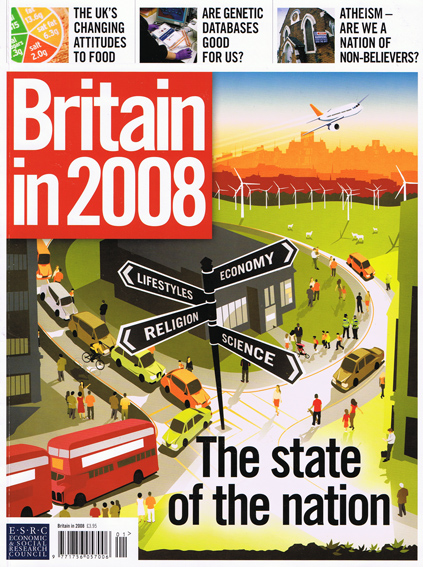STATISTICS IN MORRISONS
April 29th, 2008 adminDon’t ask me why, but I found myself having lunch in a Morrisons cafe this afternoon- a fascinating place to people watch even if you do have to eat while listening to the constant shrill of the tills. With a few hours to kill I had a look through this year’s issue of ‘Britain in 2008- The State of the Nation’ published by the Economic & Social Research Council (ESRC). The ESRC funds research and training in social and economic issues. They are an independent organisation, established by Royal Charter, receiving most of their funding through the Department for Innovation, Universities and Skills.Â
Â
Â
Of particular interest was the ‘Britain at a Glance’ section which included the following statistics-
- In mid 2006, the UK population stood at 60.6 million. It’s an ageing population with the 80-plus the fasted growing age group. By 2050, it is likely that one quarter of the populations will be age 65-79, and ten percent 80-plus.
- Ninety two per cent of the UK population is white. Indians are the biggest single minority group, followed by Pakistanis. In the year to 2006, an estimated 565,000 immigrants arrived in the UK. The largest sender countries were Poland (9 per cent of new immigrants), India (8 per cent) and South Africa (five per cent). Over the same period, 380,000 people left the UK; Australia and Spain were the top destinations.
- One in five people in the UK live in a rural area (settlements of fewer than 10,000 people). Among the UK’s ethnic minorities only three per cent live in rural areas.
- There are more than 25 million households in the UK. Seventy per cent are owner-occupied.
- The UK’s top cities are London, Birmingham, Glasgow, Liverpool, Leeds, Sheffield, Edinburgh, Bristol, Manchester, and Leicester.
- We are living in smaller households. The average number of people per household fell from 2.84 in 1971 to 2.36 in 2001.
- The average working Briton works 1,642 hours a year (equivalent to 34 hours a week). UK workers have less paid leave than those in the European Union (200 days compared to 25-30 days in most EU countries), but more than in Japan (17 days) and the US (10 days). One quarter of the workforce work part-time; more than three quarters of part-time workers are women.
- According to the latest figures, 12.7million people live in poverty (on incomes 60 per cent of the median). Thirty per cent of people living in poverty are children and 17 per cent are pensioners.
- The average household disposable income is £445 per week. The median is £363 per week: half the population have higher incomes than this and half lower.
- The average household spends £443 a week. The biggest single spending item is transport, followed by recreation and culture, then food and drink, housing, restaurants and finally clothing.
- As a nation, we spent one third of our time sleeping, one quarter working (including housework) and one quarter on leisure activities. The biggest change since 2000 has been an increase in time spent socialising (and a fall in time spent on housework).
- According to the most recent World Values Survey, 38 per cent of Britons said they were very happy, 55 per cent said they were quite happy.



April 30th, 2008 at 5:22 pm
Does the report bring out the fact that Fawcett highlights? — “Poverty in the UK has a female face.”
From http://www.fawcettsociety.org.uk/index.asp?PageID=22
This stark fact can be clearly seen in the high rates of poverty amongst female-headed households.
* Over half (53%) of all lone parent households are poor
* Older, single women have a 24% chance of living in poverty.
* The combination of racism and sexism makes Black and Minority Ethnic women particularly vulnerable to poverty.